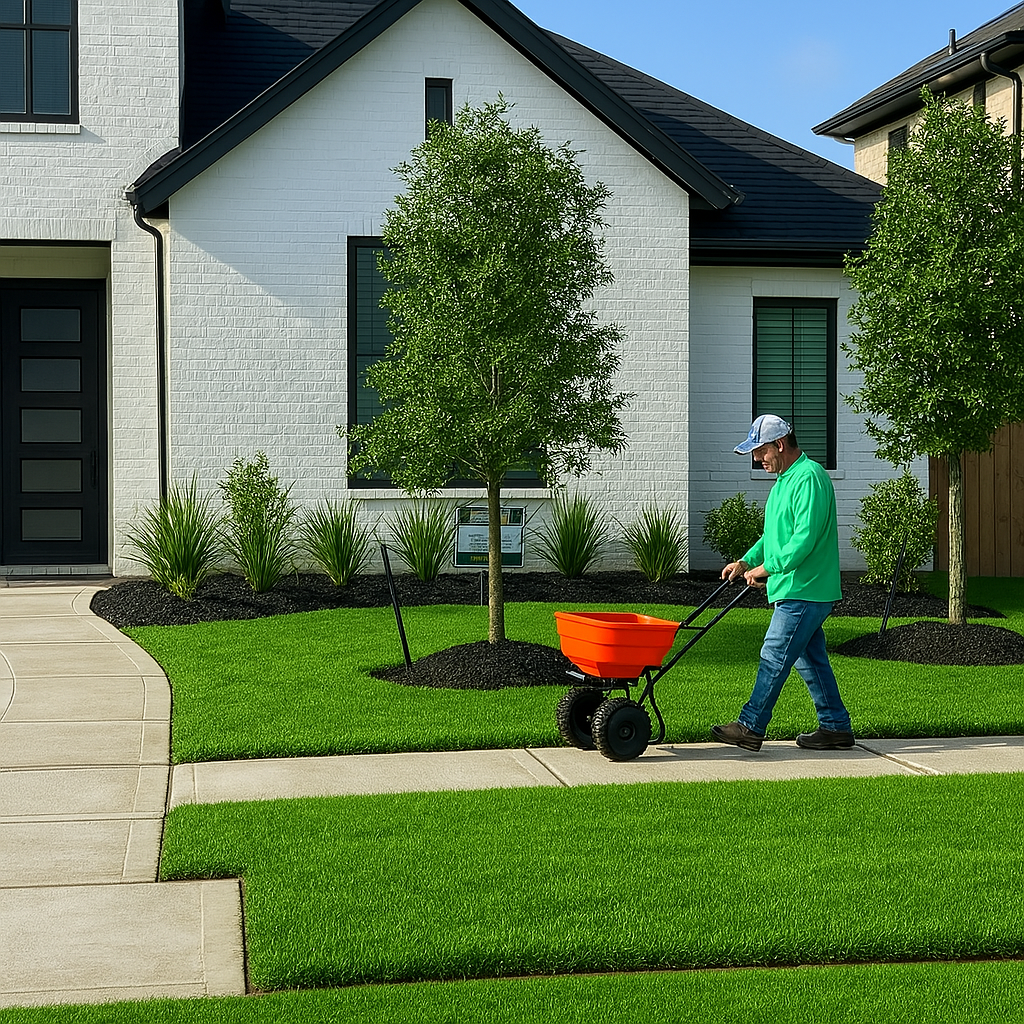Spring Yard Cleanup (Preparing for Growth)
Spring cleanup is crucial after the dormant winter months to encourage new growth and a healthy growing season.
Key Tasks:
Raking and Debris Removal:
Leaves and Winter Debris: Rake up any leftover fallen leaves, twigs, branches, and other debris that accumulated over winter. This helps prevent fungal diseases and allows new grass to emerge.
Matted Grass: Gently rake matted-down grass to allow air circulation and encourage green-up.
Edging: Redefine the edges of garden beds, walkways, and driveways to give a crisp, clean look.
Pruning:
Dead or Damaged Branches: Remove any branches on trees and shrubs that were damaged by winter weather or are dead.
Perennials: Cut back dead foliage from ornamental grasses and perennials that were left standing for winter interest.
Spring-Flowering Shrubs: Prune these after they finish flowering.
Weeding: Start early to remove weeds before they establish deep roots and spread.
Fertilizing (Optional/As Needed): Depending on your soil test results and grass type, spring is a common time to apply a slow-release fertilizer to kickstart growth.
Mulching: Apply a fresh layer of mulch (2-4 inches) to garden beds. This helps suppress weeds, retain soil moisture, and regulate soil temperature.
Lawn Care:
Dethatching: If thatch is over 1/2 inch thick, spring (or fall) is a good time to remove it.
Aeration: If soil is compacted, core aeration can be done in spring (for cool-season grasses).
Overseeding: If your lawn is thin, spring is a good time to overseed (especially for cool-season grasses), often done in conjunction with aeration.
Inspect Irrigation Systems: Check for any damage from winter freezes and ensure all sprinkler heads are functioning correctly.
Garden Tool Maintenance: Clean and sharpen tools, prepare mowers for the season.
Fall Yard Cleanup (Preparing for Dormancy)
Fall cleanup is essential to prepare the lawn and garden for the cold winter months, preventing disease, pests, and damage.
Key Tasks:
Leaf Removal: This is often the most significant task. Rake, blow, or mulch fallen leaves regularly to prevent them from smothering the grass and creating a breeding ground for pests and diseases.
Winterizing Perennials and Annuals:
Perennials: Cut back the dead foliage of most perennials after the first hard frost. Some, like ornamental grasses, can be left for winter interest and cut back in spring.
Annuals: Remove dead or dying annuals from containers and beds.
Pruning:
Dead or Diseased Branches: Remove these from trees and shrubs.
Summer-Flowering Shrubs: Prune these in late fall or early spring. Avoid heavy pruning of spring-flowering shrubs in fall, as you'll cut off next year's blooms.
Weeding: Continue weeding to prevent perennial weeds from getting established over winter.
Final Mowing: Lower your mower blade for the last few cuts of the season. This helps prevent matting and fungal diseases like snow mold.
Aeration and Overseeding (Cool-Season Grasses): Fall is the absolute best time for these tasks for cool-season grasses, as it allows new grass to establish before winter and for the roots to grow deep.
Fertilizing: A "winterizer" fertilizer (high in potassium) is often applied in late fall to help grass roots store energy for winter and promote early spring green-up.
Winterizing Irrigation Systems: Blow out sprinkler lines to prevent freezing and cracking pipes.
Clean and Store Tools: Clean, sharpen, and oil all garden tools before storing them for winter. Drain fuel from gas-powered equipment.
Protect Sensitive Plants: Apply mulch around the base of sensitive perennials and shrubs to provide insulation. Consider wrapping young trees or shrubs with burlap to protect them from winter winds and sun scald.
By performing these seasonal cleanups, you ensure your lawn and garden remain healthy, vibrant, and ready to thrive throughout the year.









